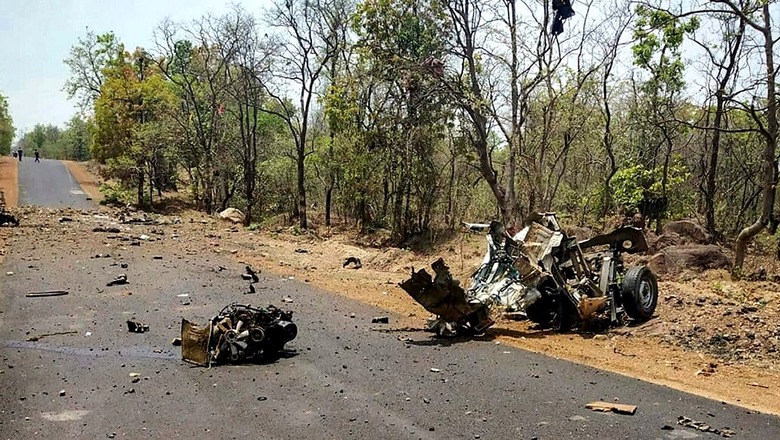
views
The government of India’s three-dimensional approach — a better strategy, making public contribution to the development and state-Centre coordination — to wipe out Left Wing Extremism (LWE) has shown a significant decline in Naxalist violence.
According to government data, cases of violence have reduced by 52 per cent and the number of deaths by 69 per cent from 6,035 to 1,868 in the decade 2014-23 compared to 2004-14. A total of 195 new camps have been established in the Red zone.
Similarly, cases have been given to the National Investigation Agency (NIA) to probe thoroughly, special task forces have been constituted with offensive strategy and air support have been given for effective operations.
According to the Ministry of Home Affairs, after various high-level deliberations and interactions with the state governments concerned in dealing with this decades-old problem, it was felt appropriate that an integrated approach aimed at the relatively more affected areas would deliver results.
“With this in view, a detailed analysis of the spread and trends in respect of Left Wing Extremist violence has been made and 70 districts in 10 states have been taken up for special attention with regard to planning, implementation and monitoring various interventions,” MHA said.
According to MHA data, incidents of Left Wing Extremism have reduced from 14,862 to 7,128. The number of deaths of security forces due to LWE has declined by 72 per cent from 1,750 in 2004-14 to 485 during 2014-23 and the number of civilian deaths has declined by 68 per cent from 4,285 to 1,383. Similarly, the number of districts with violence was 96 in 2010, which declined by 53 per cent to 45 in 2022. Along with this, the number of police stations reporting violence decreased from 465 in 2010 to 176 in 2022.
The Union government closely monitors the situation and supplements and coordinates their efforts in several ways. These include providing the Central Armed Police Forces (CAPFs); sanction of India Reserve (IR) battalions, setting up of Counter Insurgency and Anti-Terrorism (CIAT) schools; modernisation and upgradation of the State Police and their Intelligence apparatus; reimbursement of security related expenditure under the Security-related Expenditure (SRE) Scheme; providing helicopters for anti-LWE operations, assistance in training of State Police through the Ministry of Defence, the Central Police Organisations and the Bureau of Police Research and Development; sharing of Intelligence; facilitating inter-State coordination; assistance in community policing and civic action programmes etc.
The underlying philosophy is to enhance the capacity of the state governments to tackle Maoist menace in a concerted manner.


















Comments
0 comment